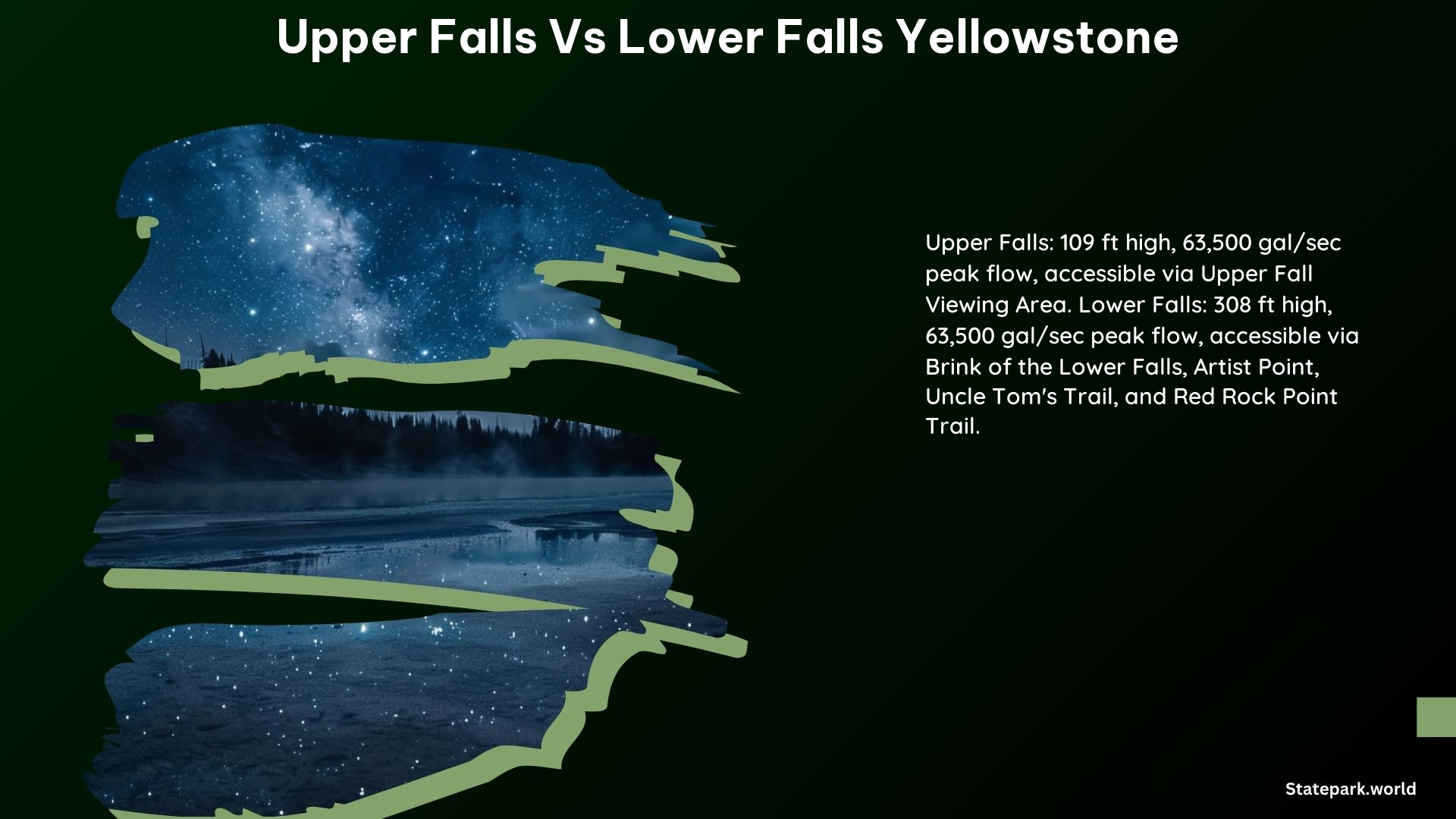Yellowstone National Park is home to two breathtaking waterfalls: Upper Falls and Lower Falls. While both are spectacular natural wonders, they differ significantly in terms of height, volume of water, and accessibility. This blog post will explore the key differences between Upper Falls and Lower Falls, as well as the best viewing points for each.
Height and Volume of Water
The most significant difference between Upper Falls and Lower Falls is their height. Lower Falls stands at an impressive 308 feet, making it the tallest waterfall in Yellowstone National Park. In contrast, Upper Falls is significantly smaller, measuring 109 feet in height.
In addition to the difference in height, Lower Falls also has a much higher volume of water flowing over it. The volume of water at Lower Falls ranges from 680 cubic feet per second (cu ft/s) in autumn to a staggering 8,400 cu ft/s at peak runoff in late spring. This high volume of water creates a powerful and awe-inspiring display.
Accessibility and Viewing Points

Both Upper Falls and Lower Falls have accessible viewing points, but the options for viewing Lower Falls are more extensive.
Lower Falls Viewing Points
- Artist Point: This famous viewpoint is known for its pastel colors and stunning sunrise views of Lower Falls.
- Uncle Tom’s Trail: This strenuous hike takes visitors down 328 steps to a close-up view of the falls.
- Red Rock Point Trail: This trail offers a viewing platform overlooking the impressive Lower Falls.
Upper Falls Viewing Point
- Upper Falls Viewing Area: This viewing area is located near the parking lot where the trailhead for Uncle Tom’s Trail begins.
While the Upper Falls Viewing Area provides a good vantage point, the multiple viewing options for Lower Falls allow visitors to experience the waterfall from different perspectives and get a more comprehensive understanding of its grandeur.
Additional Waterfalls
In addition to Upper Falls and Lower Falls, there is another lesser-known waterfall in the area: Crystal Falls. This waterfall is created by the outfall of Cascade Creek into the canyon and can be seen from the South Rim Trail.
History
The Yellowstone Falls have been known to Native American tribes for centuries, with the first European to see the falls likely being French fur trapper Baptise Ducharme in 1824. Over the years, the falls have become a iconic and beloved feature of Yellowstone National Park, drawing visitors from around the world to witness their natural beauty.
In conclusion, while both Upper Falls and Lower Falls are stunning natural wonders, they differ significantly in terms of height, volume of water, and accessibility. Visitors to Yellowstone National Park should make an effort to see both falls, as each offers a unique and awe-inspiring experience.
References
- 51 Cent Adventures. (2018). Upper Falls vs Lower Falls – Yellowstone National Park. Retrieved from http://www.51centadventures.com/2018/04/upper-falls-vs-lower-falls-yellowstone.html
- TripAdvisor. (2011). Easy Upper and Lower Falls Hike? – Yellowstone National Park Forum. Retrieved from https://www.tripadvisor.com/ShowTopic-g60999-i481-k4496617-Easy_Upper_and_Lower_Falls_Hike-Yellowstone_National_Park_Wyoming.html
- Yellowstone Park. (2021). 3 Waterfalls of the Grand Canyon of Yellowstone. Retrieved from https://www.yellowstonepark.com/things-to-do/natural-wonders/3-waterfalls-of-the-grand-canyon-of-yellowstone/
- Wikipedia. (n.d.). Yellowstone Falls. Retrieved from https://en.wikipedia.org/wiki/Yellowstone_Falls
- Adventure 69 Degrees North. (2016). Best spots to view Upper and Lower Falls in the Grand Canyon of Yellowstone. Retrieved from https://adventure69degreesnorth.com/2016/11/25/the-grand-canyon-of-yellowstone/.
